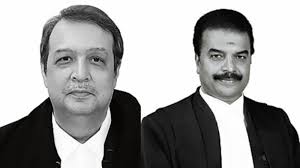15 April 2025 Indian Express Editorial
What to Read in Indian Express Editorial( Topic and Syllabus wise)
Editorial 1 : A Bid For Unfettered Supremacy
Context: Tamil Nadu governor case: Judicial overreach, not constitutional interpretation.
Introduction: A two-judge bench invoked Article 142 (complete justice) to set time limits for gubernatorial assent to Bills, compel the President to seek the Court’s opinion under Article 143 (advisory jurisdiction) and threaten mandamus (judicial order) against the President if advice is not followed.
Key Arguments Against the Judgment
- Judicial Overreach
- The Court allegedly rewrote constitutional provisions (e.g. imposing time limits on Article 200 without legislative approval).
- Separation of Powers Violated: The judiciary encroached on executive (Governor/President) and legislative (Parliament’s amendment power) domains.
- Undermining Constitutional Framework
- Federal Balance: The ruling disrupts the balance between states and the Union by making the Supreme Court the real governor.
- Article 74 Ignored: The President must act on Cabinet advice, but the Court bypassed this by directing presidential action.
- Procedural Irregularities
- Bench Size: The case involved substantial questions of law but was decided by a two-judge bench, violating Article 145(3) which requires a 5-judge bench.
- Lack of Notice: States affected by the judgment were not consulted, violating principles of natural justice.
Constitutional Provisions in Conflict
- Article 142: Used to override Article 200 (Governor’s assent process).
- Article 200: The court-imposed time limits bypassed legislative amendment under Article 368.
- Article 74: The court sidestepped Cabinet’s role in advising the President.
- Article 145(3): The case was decided by a two-judge bench that required a 5-judge bench for constitutional matters.
Implications of the Judgment
- Expansion of Judicial Power
- The judiciary could become the final authority on state legislative matters.
- Risks of judicial supremacy overriding elected branches.
- Precedent for Future Conflicts
- The judgement opens the door for courts to mandate actions for the President/Governors.
- Encourages states to litigate delays in Governor’s assent.
- Threat to Constitutional Stability
- It weakens the separation of powers and federalism.
- The judgement risks legislative retaliation (e.g. Parliament regulating judicial procedures under Article 145(1)).
Way Forward: Recommendations
- Judicial Review by Larger Bench
- Restore Judicial Restraint: Courts should avoid shapeshifting the Constitution based on subjective morality.
- Legislative Measure: Parliament could legislate timelines for judicial decisions or create special appellate courts.
Conclusion: The judgment contradicts the Constitution’s founding principles of limited powers and democratic accountability.
Editorial 2 : President Precedent
Context: The Supreme Court must pause and examine unintended consequences of its ruling prescribing a timeline for the president
Key Aspects of the Supreme Court Ruling
- Timelines for Governors
- The judgement mandated deadlines for Governors to act on bills (grant assent, return, or refer to the President).
- It aims to prevent arbitrary delays and uphold democratic accountability.
- Extension to the President’s Role
- Introduced a three-month timeline for the President to decide on bills referred by Governors.
- Allows states to seek a writ of mandamus against the President for non-compliance.
- Legal Mechanism: It relies on Article 200 (Governor’s duty to assent after re-passage of bills) and Article 143 (advisory jurisdiction on constitutional questions).
Constitutional and Procedural Concerns
- Separation of Powers
- Article 361: Grants the President immunity from judicial proceedings, raising questions about enforceability of timelines.
- Judicial Overreach: Extending scrutiny to the President risks breaching constitutional boundaries between executive and judiciary.
- Ambiguity in Jurisdiction: The Court’s willingness to examine the constitutionality of bills (not Acts) under Article 143 blurs lines between legislative and judicial domains.
- Federal Tensions: Centralized scrutiny of the President’s role could strain Centre-state relations, especially in Opposition-ruled states.
- Political Nature of the Issue: The Governor’s role is inherently political, requiring diplomatic resolution rather than judicial micromanagement.
Implications and Broader Impact
- Accountability vs. Overreach
- Positive: Timelines ensure Governors/President cannot indefinitely stall legislation, safeguarding legislative accountability.
- Negative: Risks judicial encroachment into executive functions, setting precedents for future interventions.
- Political Ramifications: This may escalate conflicts between Opposition states and the Centre, with Governors acting as proxies.
- Unintended Consequences: Potential erosion of trust in constitutional offices (e.g. President’s neutrality).
Way Forward: Recommendations
- For the Judiciary: Revisit the ruling’s extension to the President to uphold separation of powers.
- For the Centre: Address Governor appointments and partisanship to reduce friction with states.
- For Constitutional Offices: The President’s office must remain above political fray to preserve institutional integrity.
Conclusion: The SC’s ruling balances democratic accountability with judicial activism. While timelines for Governors are a progressive step, extending scrutiny to the President risks constitutional overreach. The Centre and states must prioritize cooperative federalism to resolve such conflicts politically, reducing reliance on judicial intervention.


